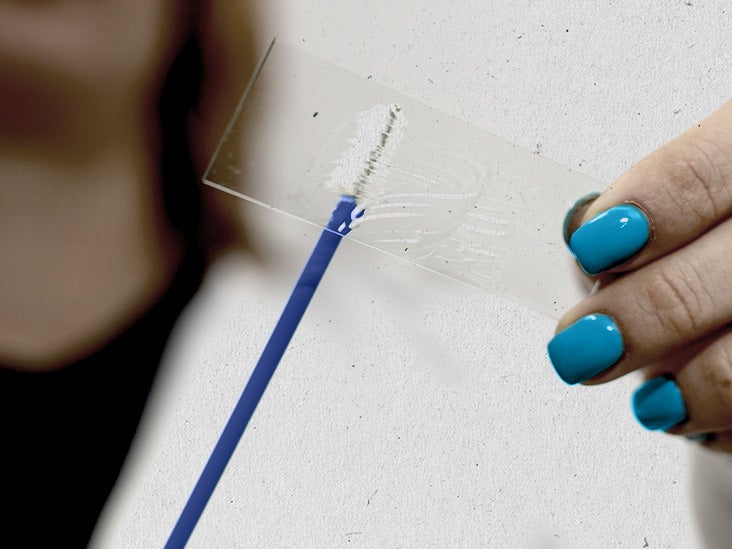Abnormal pap smears and yeast infections: Is there a link? - Medical News Today

A yeast infection can impact the results of a Pap smear. The presence of a yeast infection can cause some cells to appear abnormal. However, these cells are not related to cancer.
Yeast infections occur when the amount of Candida albicans, a type of yeast in the vagina, grows out of control. Symptoms usually include itching, burning, and inflammation around the vagina and vulva. A person may also develop a whitish coating around the vagina.
This article examines how yeast infections can affect the results of a Pap smear test.
It also discusses what to do if a person has a yeast infection before their Pap smear appointment and other factors that can cause abnormal results.
A Pap smear samples cells from the cervix to look for any changes caused by human papillomavirus (HPV) that can lead to cervical cancer if left untreated.
According to the
ASC-US is the most common abnormal Pap smear result. It means that some of the cells do not appear normal and it is not clear if HPV is the cause.
Do yeast infections cause abnormal cells?
A yeast infection does not cause abnormal cells. However, it can cause some cells to appear abnormal.
It is important to note that the abnormal appearance of these cells is not related to cancer.
If a person has symptoms of a yeast infection, or is taking medications for a yeast infection, they should inform the doctor before the Pap smear appointment.
The doctor may suggest that they rearrange the Pap smear until a person has finished treating the yeast infection.
In
If this happens, the
Learn more about treating a yeast infection here.
Vaginitis refers to the inflammation of the vagina that can occur due to a disruption of the vaginal microbiome. A yeast infection is a type of vaginitis.
According to an older 2011 study, the risk of developing vaginitis may rise slightly in the 7 weeks following a Pap smear test.
This may happen due to the use of lubricant and the speculum, which could alter the balance of vaginal organisms. However, more research is necessary to establish a definite risk.
Pap smear results may return one of several
- Normal: There is no sign of cancer, pre-cancer, or other abnormalities.
- Unsatisfactory Pap test results: There may not have been enough of a sample, or there may have been blood or mucus hiding the cells. A healthcare professional will request a second screening within
2–4 months . - Abnormal: There are changes to the cervical cells. It is important to note that this does not mean a person has cancer. Abnormal results include:
- ASC-US
- atypical glandular cells (AGC), which means that there were some abnormal glandular cells
- low-grade squamous intraepithelial lesions (LSIL), which usually means that HPV has caused low-grade changes
- high-grade squamous intraepithelial lesions (HSIL), which means that moderately or severely abnormal cervical cells were present
- atypical squamous cells, cannot exclude HSIL (ASC-H), which means that abnormal cells were present that could be HSIL
- adenocarcinoma in situ (AIS), which means there is an advanced area of abnormal growth on the cervix
- cervical cancer cells
Learn more about Pap smears and when to have one here.
A yeast infection can cause some cells to appear abnormal, which means that the results of a Pap smear come back as ASC-US. However, this is not an indication of cervical cancer.
There may also be a slight increased risk of a person developing a yeast infection following a Pap smear due to the introduction of the speculum and lubricant to the vaginal microbiome.
If a person has a yeast infection when they are due a Pap smear, they should contact the doctor to discuss rearranging the appointment.


Comments
Post a Comment